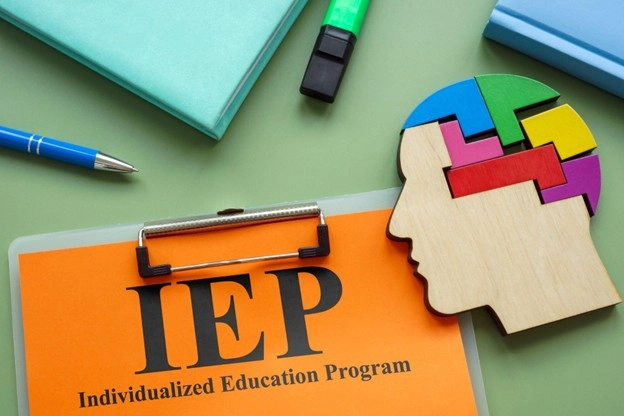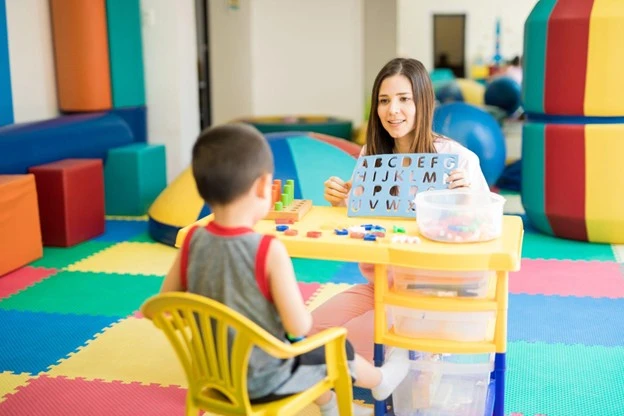IEP Guide for Parents: How to Understand and Navigate Special Education
June 26, 2025

Introduction
As a parent of a child with special needs, ensuring they receive the right education can feel overwhelming. The Individualized Education Program (IEP) is a powerful tool designed to support your child’s unique needs under the Individuals with Disabilities Education Act (IDEA). This IEP guide for parents explains the basics, offers step-by-step navigation tips, defines key terms, and highlights common challenges.
Plus, discover how VillageED can provide expert support to make the process smoother.
What is an IEP? Understanding the Basics
- An Individualized Education Program (IEP) is a legally binding document for students with disabilities in public schools (PreK–12, sometimes up to age 21). Required by IDEA, it ensures your child receives a Free Appropriate Public Education (FAPE) tailored to their academic and functional needs. The IEP is created by a team including parents, teachers, and specialists, making it a collaborative roadmap for your child’s success.

Why IEPs Matter:
- Personalized Support: IEPs address your child’s unique challenges, such as learning disabilities, autism, or physical impairments.
- Legal Protections: IDEA ensures rights for students and families, including recourse if services aren’t provided.
- Parent Involvement: You’re an equal team member, giving you a voice in decisions.
Key Components of an IEP
Every IEP includes specific elements to ensure it meets your child’s needs. Here’s what to expect:
- Present Levels of Performance
- A snapshot of your child’s current academic and functional abilities.
- Annual Goals
- Measurable objectives for the school year, like improving reading or social skills.
- Progress Monitoring
- How the school tracks and reports progress toward goals.
- Special Education Services
- Specific instruction, like resource room support or one-on-one tutoring.
- Related Services
- Supports like speech therapy, occupational therapy, or transportation.
- Accommodations and Modifications
- Adjustments like extended test time or assistive technology.
- Least Restrictive Environment (LRE)
- Ensures your child learns with non-disabled peers as much as possible.
- Transition Services
- For students 16+, plans for post-school goals like college or employment.

How to Navigate the IEP Process: A Step-by-Step Guide
Navigating the IEP process can be complex, but breaking it down helps. Here’s a clear, actionable guide:
- Request an Evaluation
Suspect your child needs special education? Contact your school in writing to request an evaluation. The district will assess eligibility under IDEA categories like autism, learning disabilities, or speech impairments.
- Form the IEP Team
If eligible, an IEP team is assembled, including you, teachers, a district representative, and specialists. You’re a key decision-maker, so prepare questions or concerns in advance.
- Develop the IEP
The team collaborates to create a plan tailored to your child’s needs. Review the draft carefully and suggest changes if needed. Meetings can be in-person, via video, or by phone for accessibility.
- Monitor and Review
IEPs are reviewed annually, but you can request updates anytime. Schools must provide progress reports, so ask for regular updates to track your child’s growth.
- Advocate for Changes
If the IEP isn’t working, request a meeting to adjust goals or services. The district must provide Prior Written Notice if they deny changes, ensuring transparency.
Pro Tip: Keep a binder of IEP documents, evaluations, and progress reports to stay organized and informed.
Common IEP Challenges and Solutions
Parents often face hurdles in the IEP process. Here are three common issues and how to address them:
Challenge: Feeling overwhelmed by jargon or process complexity.
Solution: Research key terms (see below) and ask the team to explain unclear points. VillageED’s live chat specialists can clarify doubts in real-time.
Challenge: Disagreements with the school on goals or services.
Solution: Bring data (e.g., teacher feedback, test scores) to support your case. If unresolved, consider mediation or a due process hearing under IDEA
Challenge: Slow progress toward goals.
Solution: Request frequent progress reports and meet with the team to adjust strategies. An expert IEP review can pinpoint gaps.

IEP FAQs: Addressing Trending Parent Questions
- What if my child isn’t eligible for an IEP?
If your child doesn’t qualify under IDEA, explore a 504 Plan, which provides accommodations for disabilities not covered by special education.
- How often can I request IEP changes?
You can request meetings anytime, though annual reviews are standard. Schools must respond promptly.
- Can I bring an advocate to IEP meetings?
Yes, you can bring anyone, including an educational advocate or VillageED specialist, to support you.
- What happens if I disagree with the school?
Request mediation or file a complaint with your state’s education department. VillageED can guide you through this process.
Why VillageEd is your IEP Partner
Navigating IEPs for your child with special needs can be tough, but you don’t have to do it alone. VillageED offers:
Live Chat Specialists: Get real-time answers to your IEP questions.
Expert IEP Reviews: Our specialists review your child's IEP to ensure it meets their needs, offering personalized recommendations.
Parent Resources: Access guides, templates, and advocacy tips to boost your confidence.
Don’t let IEP complexities hold you back. Visit VillageED today to connect with our experts and empower your child’s educational journey.
Conclusion
IEPs are a cornerstone of special education, ensuring your child with disabilities receives the support they need to succeed. By understanding the basics, navigating the process, and addressing challenges, you can advocate effectively.
With VillageED by your side, you’ll have the resources and expert support to make the IEP process smoother and more effective. Take the first step—visit VillageED now to unlock the tools your child deserves.

